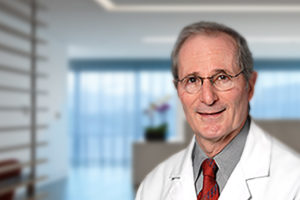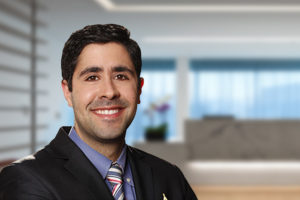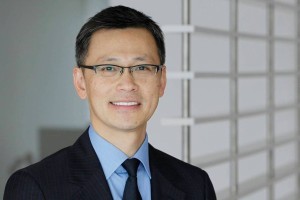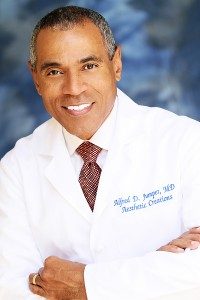When your child needs medical treatment, you want him or her to have the very best care available. So it stands to reason that if your child needs an operation, you’ll want to consult with a surgeon who is qualified and experienced in operating on children — an individual who specializes in pediatric surgery.
Pediatric surgeons operate on children whose development ranges from the newborn stage through the teenage years. In addition to completing training and achieving board certification, pediatric surgeons complete two additional years of training exclusively in children’s surgery. They then receive special certification in the sub-specialty pediatric surgery. They provide the best pediatric surgical care for your child with the most advanced surgical techniques and the personalized attention in a warm office environment. They understand that the experience of having your child to undergo an important surgical procedure can be most stressful for your family. It is our  primary goal to deliver outstanding surgical practice with reassurance and confidence to minimize your concerns.
primary goal to deliver outstanding surgical practice with reassurance and confidence to minimize your concerns.
In addition to general pediatric surgery procedures such as appendectomies, excisions, and hernia surgeries, the following is a sampling of some of the specialized pediatric surgical procedures performed at K and B Surgical Center:
Ear Reconstruction (Microtia)
Microtia is a congenital condition in which the ear does not develop properly. The word microtia means “small ear.” Microtia occurs about once in every 6,000 to 12,000 births, with a higher frequency among Hispanics, Asians, Native Americans, and Andeans.
The cause of microtia is not well understood, particularly the role of environmental and genetic factors. Genetics are thought to be a cause in only 5% of all patients. Multiple theories have been proposed to explain the cause of microtia during fetal development, such as neural crest cells disturbance, vascular disruption, and altitude, but these have not been proven.
It is important to understand that nothing a mother does during pregnancy, such as drinking coffee, alcohol use, or even drug abuse, has been shown to cause microtia. However, when taken in the first trimester of pregnancy, some medications like Thalidomide and Accutane have been linked to the condition.
Microtia usually occurs on only one side (more commonly on the right ear), but approximately 10% of patients have microtia on both sides (Bilateral Microtia).
Microtia is often seen as an isolated condition, but it may also occur with other syndromes including Hemifacial Microsomia, Goldenhar Syndrome, or Treacher Collins Syndrome. Other syndromes with microtia can also affect the kidneys, the heart, the eyes, the craniofacial bones, and the skeletal system. Children with these abnormalities are often cared for by a Craniofacial Team.
Microtia occurs in many different variations, ranging from just a small ear to complete absence of the ear, called anotia meaning “no ear.” In some cases, the ear canal is very small (aural stenosis) or absent (aural atresia). All types of ear surgery for microtia are technically difficult to perform. Most plastic surgeons would agree that ear reconstruction is one of the most challenging operations performed — requiring a combination of technical skill and artistry. The reason for this difficulty is related to the very complex shape that must be created for the ear in order for it to look natural. Our expert in ear reconstruction surgery for Microtia is Dr. Sheryl Lewin.
Nuss Procedure for Pectus Deformity
Congenital chest wall deformities are more common than one may think. It occurs in approximately 1 in every 300 children. The etiology of chest wall deformities is mostly unknown. There is a strong family history seen in many patients, as high as 40%. We always consider potential underlying genetic disorders such as Marfan syndrome. Additional specialist consultations may be important from cardiology, medical genetics, and pulmonology.
 The most common pectus deformity is pectus excavatum or commonly known as “sunken chest” or “funnel chest”. The degree of severity varies from patient to patient. In most cases, the deformity is noticed at birth or very young age. The severity can be seen to worsen over the growth of the child, particularly during growth spurt period as an adolescent. The depression of the anterior chest wall involves the sternum (breast bone) and the cartilage portions of the ribs. Most patients do not have obvious symptoms, but many have exercise intolerance, easy fatigue, and chest pains. There is commonly loss of lung capacity and shift of the cardiac position due to the compression of the organs from the chest wall.
The most common pectus deformity is pectus excavatum or commonly known as “sunken chest” or “funnel chest”. The degree of severity varies from patient to patient. In most cases, the deformity is noticed at birth or very young age. The severity can be seen to worsen over the growth of the child, particularly during growth spurt period as an adolescent. The depression of the anterior chest wall involves the sternum (breast bone) and the cartilage portions of the ribs. Most patients do not have obvious symptoms, but many have exercise intolerance, easy fatigue, and chest pains. There is commonly loss of lung capacity and shift of the cardiac position due to the compression of the organs from the chest wall.
Under the direction of Dr. Steve Chen, the Nuss Procedure is the primary surgical solution for pectus excavatum. It is a minimally invasive technique for correction of pectus excavatum by implantation of a pectus bar with thoracoscopic (small telescope in the chest) visualization. The operation utilizes minimal incisions at the sides of the chest and does not require cutting or removal of sternum and ribs. The Nuss Procedure is now over 20 years in practice and provides excellent long-term outcome with safety and effectiveness.
Meet our Pediatric Surgery Team
John Reinisch, M.D.
A board-certified plastic surgeon and graduate of Harvard Medical School, Dr. Reinisch’s primary clinical and research interests focus on the field of pediatric plastic surgery and congenital ear deformities (microtia). He has treated more than 20,000 children from across the country and around the world. Central to Dr. Reinisch’s work is his emphasis on minimally invasive surgeries and personal, comfortable care, as well as his assurance that his patients and their families feel relaxed and confident throughout treatment. In 1983, Dr. Reinisch founded the Division of Plastic Surgery at Children’s Hospital Los Angeles, which is now one of the busiest departments at children’s hospitals in the world.
Dr. Reinisch is known worldwide for his design and development of the Medpor ear reconstruction technique. Traditionally, plastic surgeons have relied on a technique that removes cartilage from a patient’s chest and uses it to build the ear. The method, though effective, has two major limitations: It requires multiple surgeries to complete and cannot be performed until a child is 8-10 years of age – old enough to have a sufficient amount of rib cartilage. By this time, the effects of living with a deformity have often taken a toll on the child emotionally. Dr. Reinisch envisioned a new technique that would save children and their families the discomfort of multiple surgeries and the emotional distress a facial deformity can cause.
Dr. Reinisch designed a new method that relies on a biomaterial—not human—chest cartilage, and can therefore be implanted in children as young as age 3 in a single surgery, resulting in a better cosmetic outcome than rib cartilage ear reconstruction. By creating a new ear from the biomaterial and wrapping it in a thin layer of tissue from the patient’s scalp, Dr. Reinisch has overcome many of the obstacles of traditional ear reconstruction and has successfully treated more than 1,000 children. Since performing the first Medpor® surgery in 1991, Dr. Reinisch has further improved the technique by eliminating the need for drains after surgery, resulting in minimal scarring. More than 80 percent of his Medpor surgeries have required only one procedure.
Dr. Reinisch’s work with microtia and his creation of the Medpor® technique have won awards from both the American Association of Plastic Surgeons (AAPS) and the European Association of Plastic Surgeons (EURAPS). Most recently, he was the honored guest at the opening of the Smile Angel Foundation’s new children’s hospital in Beijing.
Dr. Reinisch is currently the Director of Craniofacial and Pediatric Plastic Surgery for Cedars-Sinai Medical Group in Los Angeles. When he began practicing in the 1980s, the field of pediatric plastic surgery was still in its infancy, and many children’s hospitals did not consider it a specialty. He is credited with establishing the Division of Plastic Surgery at the Children’s Hospital of Los Angeles, creating a model for other hospitals and serving as its Chief. He has also served as Head of the Division of Plastic Surgery at the University of Southern California (USC).
Youssef Tahiri, M.D.
Dr. Tahiri is a Board Certified Plastic and Reconstructive Surgeon with a subspecialty in Craniofacial Surgery. After graduating from McGill Medical School, in Montreal, Canada, he completed his Plastic and Reconstructive Surgery residency at McGill University and became certified by the prestigious Royal College of Physicians and Surgeons of Canada as well as the American Board of Plastic Surgery. During his residency, he demonstrated his commitment to research and academia by pursuing a Masters Degree in Experimental Surgery, which he obtained with Honors.
Following his training at McGill, Dr. Tahiri completed an ACGME accredited Pediatric and Adult Craniofacial Surgery Fellowship at the No.1 ranked Children’s Hospital of Philadelphia and at the prestigious Ivy League University of Pennsylvania.
After completing his Craniofacial Surgery training at the Children’s Hospital of Philadelphia and the University of Pennsylvania’s Hospitals, Dr. Tahiri joined the Division of Plastic and Reconstructive Surgery at Indiana University. He routinely performed complex reconstructive, aesthetic and complex craniofacial procedures at the Riley Hospital for Children as well as Methodist Hospital and Indiana University Hospital in Indianapolis.
After spending few years at Indiana University, Dr. Tahiri moved to Los Angeles to join Dr. Reinisch at Cedars Sinai Medical Center.
Dr. Youssef Tahiri is a highly respected pediatric craniofacial surgeon who was hand selected by Dr. John Reinisch to partner and continue his practice of Microtia reconstruction. Dr. John Reinisch is the founder of the Medpore ear reconstruction technique and is considered the worldwide leader in Medpore ear reconstruction.
Dr. Tahiri embraces the most innovative, cutting-edge technique available in craniofacial and microtia surgery.
Dr. Youssef Tahiri has published a very large number of peer-review articles and presented his work at numerous regional, national and international scientific meetings. His research interests include outcomes evidence based clinical studies and translational research to enhance patients’ care and safety through improved techniques and technology.
Dr. Tahiri specializes in Pediatric Plastic and Craniofacial Surgery as well as Adult Plastic, Reconstructive and Aesthetic Surgery.
Steve P. Chen, M.D., F.A.C.S., P.A.A.P.
Dr. Chen is also the Medical Director of the Beverly Hills Pediatric Surgery and the Pectus Surgical Institute. He holds an academic appointment as an Associate Clinical Professor of Surgery and Pediatrics at the David Geffen School of Medicine, University of California, Los Angeles. Prior to establishing his private practice, he served as the Director of the Division of Pediatric Surgery at Cedars-Sinai Medical Center until 2010. Recognized for his contribution to pediatric surgical care at Cedars-Sinai, he was honored as the inaugural holder of the Walter and Shirley Wang Endowed Chair in Pediatric Surgery in 2003. Dr. Chen is a passionate surgical educator who is actively engaged in the teaching of medical students and surgical and pediatric residents. In 2009 he was honored with the Golden Apple Teaching award at Cedars-Sinai. Dr. Chen has dedicated much of his expertise to the area of minimally invasive surgery for children and is recognized throughout the greater Los Angeles medical community for his laparoscopic and thoracoscopic surgical skills.
Clinical Professor of Surgery and Pediatrics at the David Geffen School of Medicine, University of California, Los Angeles. Prior to establishing his private practice, he served as the Director of the Division of Pediatric Surgery at Cedars-Sinai Medical Center until 2010. Recognized for his contribution to pediatric surgical care at Cedars-Sinai, he was honored as the inaugural holder of the Walter and Shirley Wang Endowed Chair in Pediatric Surgery in 2003. Dr. Chen is a passionate surgical educator who is actively engaged in the teaching of medical students and surgical and pediatric residents. In 2009 he was honored with the Golden Apple Teaching award at Cedars-Sinai. Dr. Chen has dedicated much of his expertise to the area of minimally invasive surgery for children and is recognized throughout the greater Los Angeles medical community for his laparoscopic and thoracoscopic surgical skills.
Dr. Chen received his Bachelor of Arts degree in Biophysics/Medical Physics from the University of California, Berkeley and his Doctor of Medicine degree from the Keck School of Medicine at University of Southern California. He completed three surgical residencies including General Surgery, Surgical Critical Care, and Pediatric Surgery. He has received board certifications in all three areas by the American Board of Surgery. Dr. Chen has lived in the Los Angeles area for more than 21 years. He has a lovely wife and two young sons who are the center of his life.
Pediatric Anesthesia
The most common anesthesia for children having surgery is general anesthesia. This is a special kind of sleep brought about by anesthetic medications. Once asleep, your child will experience no awareness or pain. Since young children tend to be afraid of needles, our anesthesiologist will most likely administer general anesthesia in the form of a gas your son or daughter will breath through a plastic mask. Anesthesia can also be given as medication through an intravenous (“IV”) line, which is the usual technique for older children and adults. During general anesthesia, your anesthesiologist’s most important responsibility is to monitor your child and keep him/her safe, sleeping, and comfortable during the procedure. After the surgery is over, your anesthesiologist will wake your child up.
In addition to general anesthesia, your anesthesiologist may recommend other anesthetic medications and techniques to help improve your child’s level of comfort and pain management. These include the injection of local anesthetic medications (“numbing medicine”) around the surgical area, or around the nerves that transmit pain sensation in the part of the body undergoing the procedure.
Meet our Pediatric Anesthesiologist
Alfred Jumper, M.D.
Dr. Alfred Jumper is an accomplished and world-renowned Pediatric and General Anesthesiologist who received his Doctorate of Medicine Degree from The University of Iowa College of Medicine. He completed his medical training at Harvard University School of Medicine in Boston, Massachusetts where he was an Intern in General  Surgery. He later completed a residency in Anesthesia at Peter Bent Brigham Hospital and served as Clinical Fellow in Neonatal and Pediatric Anesthesiology; Harvard Medical School. Dr. Jumper moved to Los Angeles, California where he co-founded the Division of Pediatric Anesthesiology at Cedars-Sinai Medical Center. He has a gift for providing unmatched care to his patients and is highly respected by his colleagues and other members of the medical community. After twenty years of service at Cedars-Sinai, he relocated his private practice to serve as Director of Pediatric Anesthesiology at Specialty Surgical Center in Beverly Hills where he remains.
Surgery. He later completed a residency in Anesthesia at Peter Bent Brigham Hospital and served as Clinical Fellow in Neonatal and Pediatric Anesthesiology; Harvard Medical School. Dr. Jumper moved to Los Angeles, California where he co-founded the Division of Pediatric Anesthesiology at Cedars-Sinai Medical Center. He has a gift for providing unmatched care to his patients and is highly respected by his colleagues and other members of the medical community. After twenty years of service at Cedars-Sinai, he relocated his private practice to serve as Director of Pediatric Anesthesiology at Specialty Surgical Center in Beverly Hills where he remains.
Dr. Jumper is also the Medical Director of Aesthetic Creations, a Medical Corporation and provides exceptional direction and expertise in the field of Medical Aesthetics to our staff. He has over 30 years of experience in the medical field, with specific experience and passion for evidence based Anti-aging and holistic medicine and the use of Neutraceuticals and Cosmeceuticals. Dr. Jumper lectures on the effects of free radicals and inflammation; both known to cause or worsen many diseases. His knowledge of this field is deeply appreciated and respected as clients of Aesthetic Creations have the opportunity to achieve both inner and outer beauty naturally.
Dr. Jumper, a native of Tulsa, Oklahoma enjoys playing golf, outdoor stair climbing, biking and yoga. He also enjoys traveling, reading, playing the piano, photography, teaching and mentoring.
Our Mission
To serve and provide young patients with the best in surgical innovation and the highest level of personalized care. When your child needs medical treatment, you want him or her to have the very best care available. So it stands to reason that if your child needs an operation, you’ll want to consult with a surgeon who is qualified and experienced in operating on children — an individual who specializes in pediatric surgery.
Before Surgery
Prior to your child’s surgery, a nurse will call you to discuss when to arrive at K and B Surgical Center, what to bring with you, and the pre-operative fasting instructions. The nurse will also do a general health assessment and gather a medical history over the phone — as well answer any of your questions. Let the nurse know of any changes in your child’s health (a fever, runny nose, sneezing, coughing).
Instructions for fasting prior to surgery:
Patients under 16 years of age:
* Drink only clear liquids 2 hours before arrival (such as Pedialyte® or water). No fluids 2 hours prior to arrival.
* If breastfeeding, breast milk can be consumed up to 4 hours before surgery.
* If formula feeding or drinking milk, stop 6 hours before surgery
* No solid foods 8 hours before surgery.
Patients over 16 years of age:
* No solid food 8 hours surgery.
* May drink clear liquids up to 4 hours before surgery (water)
Additional instructions:
* Notify our office if your child develops sign of illness at least 3 weeks prior to the scheduled date of the surgery. Symptoms, such as fever, sore throat, cough, runny nose, rash or injury should be reported immediately.
* Teeth may be brushed on the morning of surgery, but try not to swallow any of the water used.
* Any medication your child is on should be discussed prior to the surgery with the doctor for instructions pre-surgery. Also, go over again with nurse.
* No jewelry is to be worn by the child at the center. If your child wears glasses or a hearing aid, please bring a case for storing it during the surgery.
* Loose fitting clothing should be worn by the child. Bring a bottle or cup with lid for use after the surgery. A toy and/or a special blanket can be brought for child.
* The parent or legal guardian of the child is required to remain at K and B Surgical Center throughout the surgery.
* If you have any concerns or questions, feel free to contact K & B Surgical Center at 310-746-4700.
Day of Surgery
Make sure to allow plenty of time to get to K and B Surgical Center, park your car, and get registered at the front desk. Once you arrive, the receptionist will review the registration information with you. You and your child will then remain in the waiting lounge until your nurse meets you and brings you back to the preoperative holding area. That’s where the nurse will conduct a brief examination, including taking your child’s temperature, and measuring his/her height and weight. Your child will be given a gown to change into. You will then meet your pediatric anesthesiologist who will inquire about your child’s medical condition and discuss the anesthesia plan with you, including the risks and benefits of the particular type of anesthesia that will be administered. Be sure to ask any questions you have about the anesthesia at that time. Before going to the operating room, your surgeon will meet with you, examine your child, and answer any additional questions about the surgery.
It is normal for your child to feel scared or anxious on the day of surgery – not only at the thought of the procedure but also by the unfamiliar surroundings, faces and sounds. The anesthesiologist will often prescribe a sedative anesthesiologist to calm your child and help reduce his/her anxiety. Young children are given this sedative to take by mouth in the form of a flavored liquid. Older children and young adults will have an intravenous (“IV”) line placed in the preoperative holding area, and can also receive an injectable medication to help with anxiety. In most cases, a parent will be allowed to accompany the child into the operating room and stay until the child falls asleep from the anesthesia. Once your child is asleep, you will be asked to wait in the waiting lounge. There, you will receive regular updates on the progress of the surgery or procedure. Make sure the staff has your cell phone number if you have to leave the Surgery Center for any reason.
After Surgery
Following the surgery, you will be allowed to re-join your child in the recovery room. Your son or daughter will be taken care of by a recovery room nurse who is experienced in pediatrics, and certified in pediatric advanced life support (PALS). The nurse will continue monitor your child’s vital signs and breathing, as well as be alert to any problems arising from the procedure or anesthesia. It is normal for children waking up from general anesthesia to feel drowsy and disoriented. However, these symptoms will improve progressively during the recovery room period and during the first 24 hours after surgery. If your child experiences significant pain or nausea in the recovery room, the nurse will take immediate steps to treat it. Once your child is sufficiently awake, he/she will be offered something to drink. (Babies will be allowed to nurse and drink breast milk at this time.) After your son or daughter has met the discharge criteria and is sufficiently recovered from anesthesia, he or she will be discharged and you will be given the appropriate post-operative instructions.
Here are some general post-operative guidelines:
- Do not give your child food or drink in the car on the way home.
- Make sure to follow all of your physician’s instructions, especially regarding diet and activity.
- Once home, your child should be closely accompanied for at least 24 hours. If any problems develop, please seek immediate medical attention.
- A member of the K and B Surgical Center staff will call you the next day to check on your child’s progress and answer any questions you may have.
Frequently Asked Questions
What items do I need to bring to the Center on the day of surgery?
* Parent’s photo identification (drivers license or passport).
* Child’s health insurance card or information.
* A favorite small toy or blanket for child.
* If your child wears glasses or contact lenses, bring a carrying case to store them during the surgery.
What is meant by “clear liquids?”
Clear liquids include water, apple juice, Pedialyte® or any other liquid you can completely see through without any floating material visible.
Should my child take his/her medication before surgery?
You’ll be given instructions as to which medicines are acceptable and which are not. Most medications can be continued as scheduled, right up until the morning of surgery and taken with a small sip of water. However, some medications should not be taken at all, or administered in a smaller dose. If you’re unsure, it’s always best to check with your doctor before giving your child any medications before the surgery. If your son or daughter has asthma and uses an inhalant, please bring it to the Center with you on the day of the procedure.
What if my child become ill prior to surgery?
Contact your surgeon or pediatrician right away if your child develops a cold or fever prior to surgery. The child’s breathing while under anesthesia can sometimes be affected by illness. However, in some cases of mild colds, it may still be safe to undergo anesthesia. If your child has a fever, this may mean he/she has an infection and therefore, it would be best to postpone the procedure until your child has fully recovered.
Making the decision to move forward with surgery will be made by both your anesthesiologist and surgeon based on your child’s medical history and condition.
If surgery is postponed because of a cold or illness, it is customary to wait a few weeks to allow for your child’s breathing passages to return to their normal condition.
Should I discuss anesthesia with my child?
Your child may have many questions, and talking with your child about what to expect during surgery and anesthesia is important. Once you have learned about the procedure, be honest and comforting about why your child is going to have the procedure. Explain in simple terms and continue to comfort and reassure that you’ll be there throughout the procedure.
Listen carefully to your child, and support his/her feelings. Be patient during this stressful time. Explain that being frightened is normal. Don’t be surprised if your child resorts to acting out as a result of being stressed, but this behavior usually improves after the surgery is over.
When’s a good time to start talking to my child about the surgery?
Discuss the surgery before it happens. Timing will depend on age and the level of the child’s learning and memory ability. Discussing the subject too early may actually increase anxiety. You may want to allow your son or daughter to begin asking questions, then you know it is a good time to start the conversation.
What if my child experiences pain after surgery?
You are certainly aware of your child, and are the best to sense if he/she is not comfortable or in pain. We will ask your child about whether he/she has pain, and we will continually observe Infants’ and toddlers’ behavior for signs of pain. Our staff is very familiar with the usual pain and discomfort associated with various procedures, and can ask the physician to prescribe medications if necessary. Pain medications can be given to children by mouth in the form of pills or liquids, through an IV, or as rectal suppositories.
